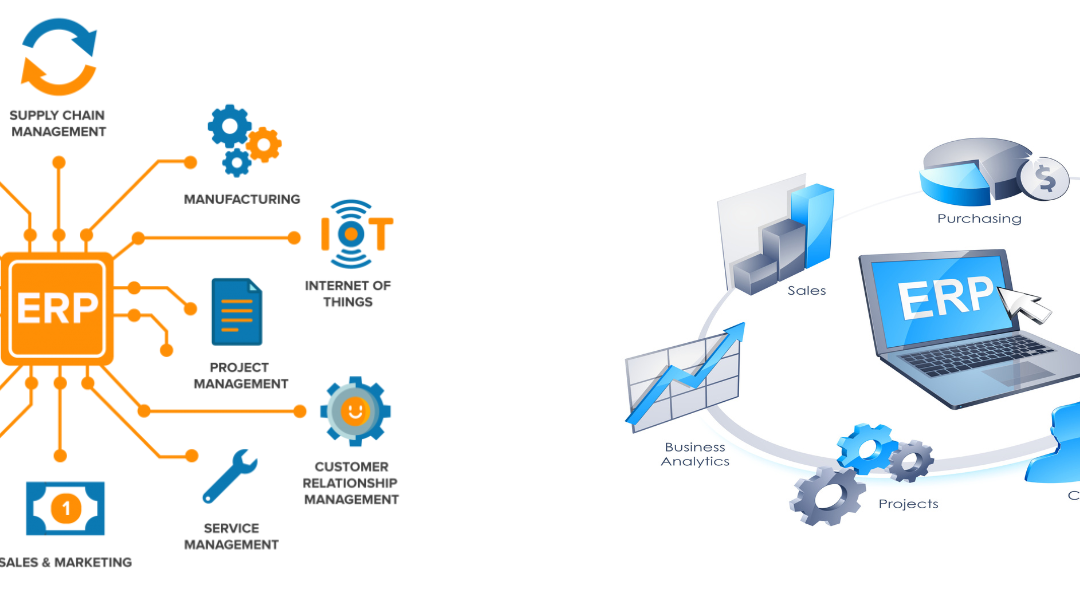In today’s ever-changing business environment, businesses constantly strive to streamline daily operations and enhance productivity. Enterprise Resource Planning (ERP) software is now an excellent choice for meeting these business objectives. The software is a robust solution for small, midsized, and large businesses. In this article, we shall look at the details of the ERP software solution and its primary aspects.
Understanding ERP Software
Businesses rely on Enterprise Resource Planning (ERP) software to streamline and unite various processes. ERP software is versatile across multiple departments, including procurement, finance, manufacturing, supply chain, human resources, and service. It consolidates all these functions into a single system, promoting efficient information flow and eliminating information silos within the enterprise.
Critical Components of ERP Software
ERP system is not a single application. Instead, it consists of several integrated modules, each focusing on a different business area. Below, you will find a list of the specific components.
Financial management
The unit handles every transaction and financial record, including accounts payable, general ledger, accounts receivable, asset management, and budgeting. The financial management unit provides comprehensive financial reporting and helps with regulatory compliance.
Human Resources Management
The HR module aligns different HR tasks such as recruiting, onboarding, payroll, employee records management, benefits administration, and performance tracking. The human resources management unit helps HR staff concentrate more on strategic areas like employee engagement and retention.
Supply chain management
The segment helps the business manage procurement, inventory, and logistics processes effectively. Besides, the unit helps monitor demand and supply balances, align purchasing, manage vendors, and control inventory costs.
Manufacturing/Production
The manufacturing manages various production processes, scheduling, work orders, bills of materials, and quality control. It ensures that manufacturing processes match the company’s goals.
Customer Relationship Management (CRM)
Although only sometimes included in ERP systems, CRM segments manage sales processes, customer data, leads, customer service, and marketing activities. The unit helps the business attract more customers and convert potential customers into active customers through marketing and information management.
ERP Software Benefits
ERP software benefits businesses in various ways. Here are the primary benefits that can significantly improve your business.
Improved efficiency
ERP systems reduce repetitive and manual tasks by automating and streamlining business processes, increasing operational efficiency and productivity.
Real-time information
ERP systems provide real-time, accurate information. With honest, timely information, businesses can make evidence-based decisions that help company growth. In addition, factual and timely information offers a holistic view of business operations, ensuring everything aligns with the plan.
Enhancing collaboration
ERP systems centralize data in one location, promoting cross-departmental collaboration. ERP software ensures departments access the same and up-to-date data, breaking down information silos. The software helps increase productivity since all departments can access the same data simultaneously without waiting for distribution.
Scalability
ERP systems are scalable and flexible. They can support businesses as they grow and evolve. The software will still accommodate changes when the company succeeds, so business owners don’t have to worry about what will happen.
Cost savings
In the long run, ERP systems can save significant costs. The software will help businesses achieve their goals through improved revenue.
The Future of ERP Software: Embracing New Technologies
Enterprise Resource Planning evolves with technology. Modern ERP systems integrate artificial intelligence, the Internet of Things, and machine learning to enhance their functions. Artificial intelligence automates repetitive tasks, enhances user interactions, and provides predictive analytics for ERP systems. On the other hand, IoT in ERPs can help businesses improve data collection by providing accurate insights into supply chain management and customer behavior.
Article Source:
What Is Enterprise Resource Planning (ERP)?—Microsoft Dynamics 365
Enterprise Resource Planning (ERP): Meaning, Components, and Examples (investopedia.com)

